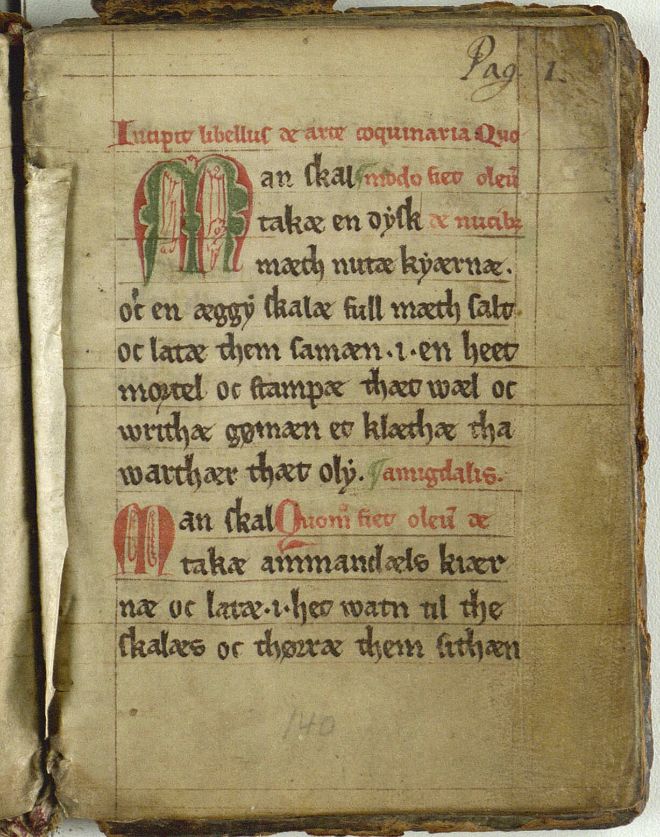In a cookbook preserved from the 1300s there is a recipe for a sauce designed for Gentlemen.
Here is the original:
Man skal takæ gørfærs naghlæ. Oc muscat.cardemomum. pipær. Cinamomum thæt ær kaniæl. Oc ingifær. Allæ iæfn væghnæ. Tho swa at kaniæl ær æm mykæt sum allæ hinæ andræ. Oc slyk tu stekt brøth sum allæ hinæ andræ. Oc støtø them allæ samæn. Oc malæ mæth stærk ædykæ oc lætæ i en læghæl. Thæt ær hærræ salsæ. Oc ær goth et halft aar.
The recipe is from the New Royal Collection 66, 8vo.Cookbook chap5-8, K4, first published by M. Kristensen in 1913.
Use cloves, nutmeg, cardamom, pepper, cinnamon and ginger. Just as much of each, except cinnamon, as it should be as much of this as of all the other spices. You should use twice as much fried bread as everything else. Ground everything well into a mortar and mix in a little vinegar.
This is called a sauce for Gentlemen. You may keep it for six months.
A modern edition might look like this:
- 1 tsp grounded cloves
- 1 teaspoon grated nutmeg
- 1 teaspoon of cardamom
- 1 tsp ground pepper
- 1 tsp ground / grated Ginger
- 5 tsp. grounded cinnamon
- 5 tablespoons crushed bread crumbs fried in butter
- 1 tablespoon vinegar
The recipe recommends adding the sauce to cold, cut meat with some salt. This sauce is a little too strong on its own, but try adding the dripping if you want to serve it with, for example, game. In the High and Late Middle Ages, it became fashionable to use pots of ceramics that could pick up the dripping from meat roasted on an open fire.





